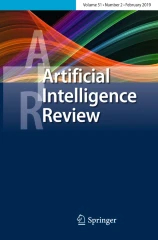
Escape: An optimization method based on crowd evacuation behaviors
Kaichen OuYang, Shengwei Fu, Yi Chen, Qifeng Cai, Ali Asghar Heidari, Huiling Chen
Artificial Intelligence Review
DOI, 2024

Kaichen OuYang, Shengwei Fu, Yi Chen, Qifeng Cai, Ali Asghar Heidari, Huiling Chen
Artificial Intelligence Review
DOI, 2024
Algorithm Design: "Escape Algorithm (ESC) models crowd evacuation behaviors to achieve effective optimization through a balance of exploration and exploitation strategies."
We are excited to present the Escape Algorithm (ESC) and invite you to explore its performance.
Abstract: Meta-heuristic algorithms, particularly those based on swarm intelligence, are highly effective for solving black-box optimization problems. However, maintaining a balance between exploration and exploitation within these algorithms remains a significant challenge. This paper introduces a useful algorithm, called Escape or Escape Algorithm (ESC), inspired by crowd evacuation behavior, to solve real-world cases and benchmark problems. The ESC algorithm simulates the behavior of crowds during the evacuation, where the population is divided into calm, herding, and panic groups during the exploration phase, reflecting different levels of decision-making and emotional states. Calm individuals guide the crowd toward safety, herding individuals imitate others in less secure areas, and panic individuals make volatile decisions in the most dangerous zones. As the algorithm transitions into the exploitation phase, the population converges toward optimal solutions, akin to finding the safest exit. The effectiveness of the ESC algorithm is validated on two adjustable problem size test suites, CEC 2017 and CEC 2022. ESC ranked first in the 10-dimensional, 30-dimensional tests of CEC 2017, and the 10-dimensional and 20-dimensional tests of CEC 2022, and second in the 50-dimensional and 100-dimensional tests of CEC 2017. Additionally, ESC performed exceptionally well, ranking first in the engineering problems of pressure vessel design, tension/compression spring design, and rolling element bearing design, as well as in two 3D UAV path planning problems, demonstrating its efficiency in solving real-world complex problems, particularly complex problems like 3D UAV path planning. Compared with 12 other high-performance, classical, and advanced algorithms, ESC exhibited superior performance in complex optimization problems.
Escape Algorithm (ESC): This optimization algorithm is inspired by the behavior of crowds during emergency evacuations. By modeling calm, herding, and panic behaviors, ESC efficiently solves complex problems by dynamically balancing exploration and exploitation.
Conceptual Foundation: The essence of ESC lies in simulating crowd behaviors during evacuations. Individuals in calm states guide the crowd, herding individuals follow others, and panic-driven individuals introduce random movements, reflecting the unpredictability in real emergencies. This approach leads to efficient optimization strategies.
Algorithm Structure: The ESC algorithm consists of distinct phases:
Initialization: The population is randomly distributed, with individuals representing solutions in the search space.
Evacuation Simulation: Calm individuals explore optimal paths, herding individuals exploit promising areas, and panic-driven individuals ensure diversity by introducing randomness.
Adaptation: Over iterations, the behavior shifts from exploration to exploitation, refining the population's solutions.
Optimization: The population iteratively improves its position based on the calm, herding, and panic-inspired movement patterns.
Termination: The process ends when convergence is achieved or the maximum iterations are reached.
Panic Index: A panic index, decreasing over time, governs the chaotic behavior of the panic group, ensuring that random exploration diminishes as the algorithm converges towards optimal solutions.
Elite Pool: The top-performing solutions are stored in an elite pool, guiding the population towards high-quality solutions while avoiding premature convergence.
The ESC algorithm balances the need for exploration and exploitation through a dynamic, crowd-inspired framework, offering a novel way to solve complex real-world problems.